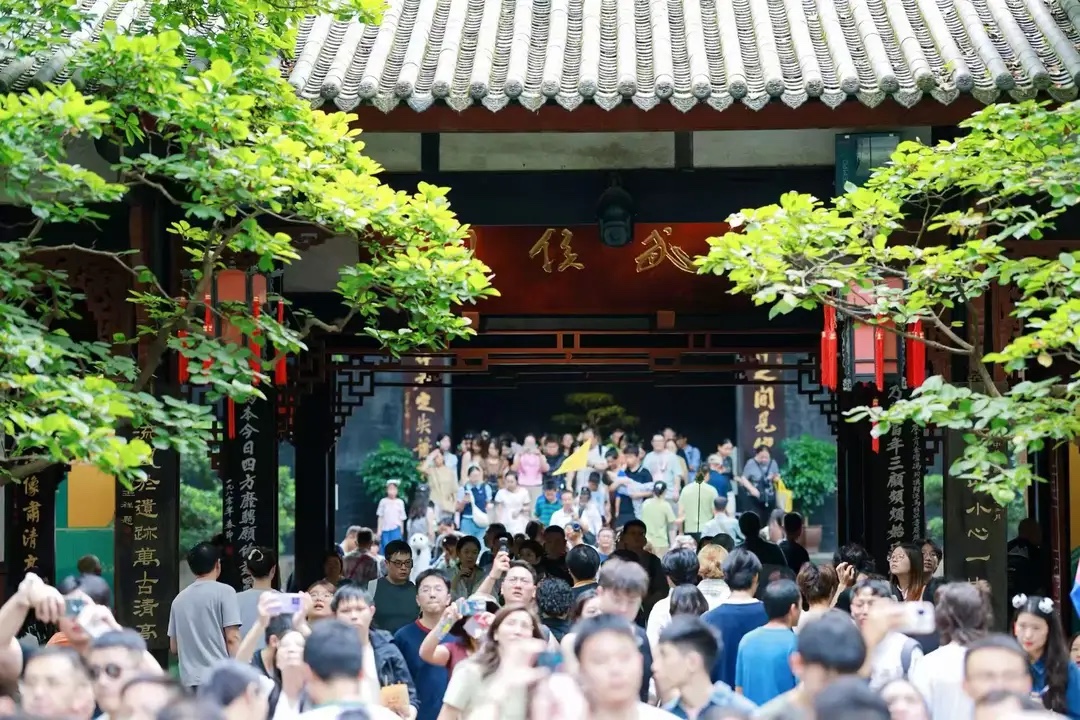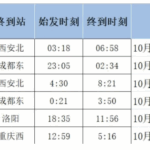Where to go in the golden autumn of October? Experience the vibrant atmosphere of Chengdu. When the National Day holiday coincides with the Mid-Autumn Festival, the extended eight-day holiday combines travel with family reunions. Chengdu concluded the holiday period with a spectacular cultural and tourism feast, delivering impressive results.
According to comprehensive calculations of cultural and tourism data, from the 1st to the 8th, the city received 28.623 million tourist visits, representing a 5.3% increase compared to the same period, with total tourism revenue reaching 29.35 billion yuan, up 13.4%. The average tourism spending per person was 1,025.3 yuan, a 7.7% increase. The city welcomed 10.676 million non-local visitors, a 6.4% growth, while inbound tourist numbers rose by 32%. Visitors from South Korea, Indonesia, Thailand, Vietnam, and other countries and regions ranked among the top sources. The city’s A-level tourist attractions received 14.169 million visitors, an 8.1% increase.
How did Chengdu’s cultural and tourism sector become so popular during this holiday? Here’s how Chengdu achieved it.
Chengdu Ranks Second Nationally
Hot Cultural Tourism Consumption and Popular Attractions
Data shows that during the National Day and Mid-Autumn Festival holiday, Chengdu ranked second nationally among top cultural and tourism consumption destination cities. According to travel reports, Chengdu was the second most popular long-distance domestic travel destination. In the list of cities most favored by international visitors, Chengdu placed fourth.
This National Day and Mid-Autumn Festival holiday, Chengdu centered around the theme “Experience the Vibrant Atmosphere of Chengdu—Take a Walk on Chengdu’s Streets in October.” Through artistic enjoyment, holiday celebrations, and scenic discoveries, the city launched over 300 themed activities and a series of distinctive routes, continuously boosting cultural tourism consumption with multiple impressive metrics.
During the dual festivals, several popular attractions in Chengdu remained highly crowded. The Chengdu Research Base of Giant Panda Breeding limited daily entries to 80,000 visitors, with tickets selling out days in advance. The Dujiangyan and Mount Qingcheng Scenic Area (including the Back Mountain) issued multiple visitor flow warnings due to high reservation numbers, receiving a total of 617,000 visitors over the eight days. The Chengdu Wuhou Shrine Museum also saw tickets sell out for several consecutive days, with many metrics reaching record highs. Over eight days, it welcomed 824,422 visitors, with a single-day peak of 143,400 visitors.

Meanwhile, in Chengdu, international visitors transitioned from “sightseeing” to “living,” deeply integrating into the city. Currently, Chengdu has established 205 inbound tourism service points, covering all 4-star hotels and 4A-level scenic spots citywide. Twenty-five hospitals offer international medical services, and over 1,200 restaurants provide bilingual menus. For transportation, the metro supports bilingual announcements and direct payment with international bank cards. Attractions like the Panda Base are equipped with AI translation screens, offering multilingual services for foreign tourists. Data from the Chengdu border inspection station shows that from October 1 to October 7, 5:00 PM, the station inspected over 8,900 inbound foreign nationals, a 57.35% year-on-year increase.
In Chengdu, visitors can enjoy a complete experience of “eating, drinking, entertainment, shopping, and fun!” Driven by various activities, consumption in major commercial districts and streets continued to heat up. According to industry monitoring data, from the 1st to the 7th, ten key monitored commercial districts in the city recorded a total footfall of 20.115 million visitors, a 2.7% year-on-year increase, generating nearly 4 billion yuan in revenue, up 4.4%. Two hundred fifteen characteristic business streets saw a total of 40.519 million visitors, a 5.0% increase, with revenue reaching 6.32 billion yuan, a 5.4% rise. Additionally, data from the commerce system indicates that from the 1st to the



